Praying Mantis: Fierce and Fascinating Garden Bugs
Updated: Jul. 25, 2023
Find out what foods a praying mantis will eat and how to attract these beneficial bugs. Plus learn about praying mantis eggs and babies.
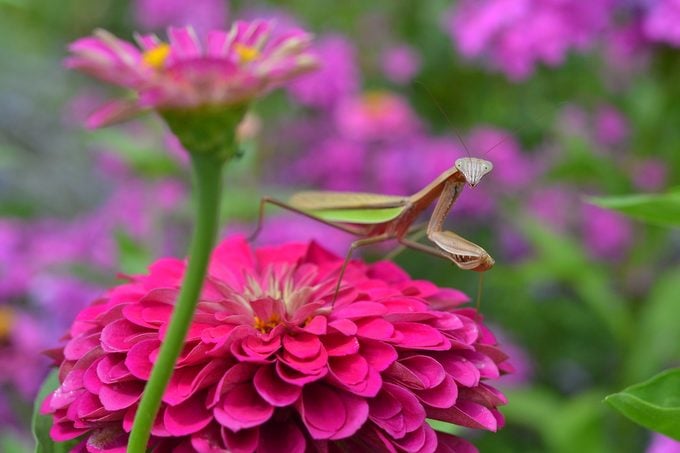
Maybe you’ve spotted a praying mantis clinging to a thin branch or skulking in a thick garden hedge. With front legs folded in what looks like prayer, these large-bodied insects are fun to look at—and hard to miss. Throw in their unusual behavior, like cocking their heads sideways and hunting prey big and small, and praying mantises become some of the fiercest and most fascinating bugs in your garden.
Well over a thousand mantid species crawl across the globe, but only a handful live in North America. Collectively, they go by the catchall term “praying mantis” because of the way the insect holds its forelimbs in front of its thorax. But that serene posture can be deceiving: While it may seem to be in deep meditation, it’s actually waiting for an unsuspecting insect to venture too close.
Find out whether praying mantis sightings have meaning.
Ask the Experts: What Does a Praying Mantis Eat?
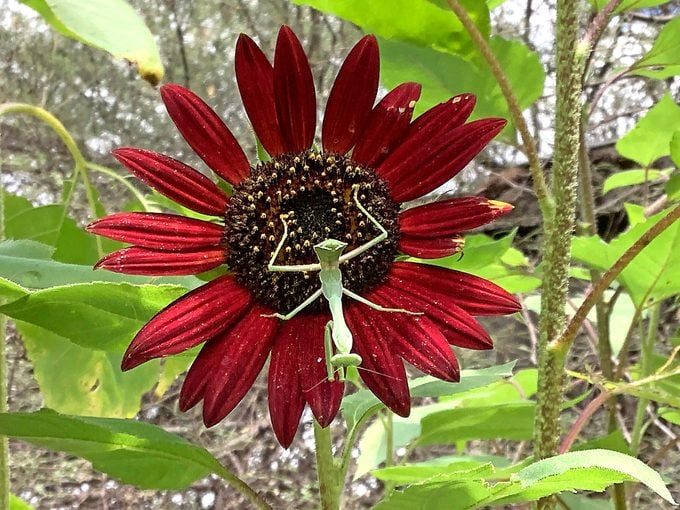
Mantids typically eat other bugs but aren’t too picky about dinner. If a fellow garden visitor passes near enough, they instinctively try to grab it and make a meal of it. While this does mean that praying mantises will consume beneficial insects, like butterflies and bees, they’re also happy to dine on pests like mosquitoes and flies.
“I’ve heard from some people that praying mantises are a problem in gardens. Is this true?” says Sue Moreaux, Forestville, Wisconsin.
Kenn and Kimberly Kaufman: Praying mantises eat other insects, so they’re sometimes recommended for pest control, but they’re just as likely to eat pollinators as pests, so their impacts are mostly neutral. In Pennsylvania and elsewhere in the Northeast, most large mantises belong to three introduced species, one from Europe and two from Asia, and they can cause problems when their populations are unnaturally high. In flower gardens they may catch many bees, butterflies and other pollinators, and they have even been known to kill hummingbirds on occasion.
Melinda Myers: Most gardeners are happy to see praying mantises in their garden. They are predators who eat flies, beetles, crickets, moths and grasshoppers. Smaller prey, not hummingbirds, are their preferred food. They may snatch a hummingbird when pursuing insects drawn to the sugary water in hummingbird feeders. Or, if they are hungry enough, they may go after this much larger prey. The larger tropical mantises will eat other animals such as lizards and frogs.
Keep your yard safe from hummingbird predators.
Praying Mantis Predators
Melinda says birds, spiders and bats eat praying mantises, and if they fall into water they can become a meal for fish.
How Long Does a Praying Mantis Live?
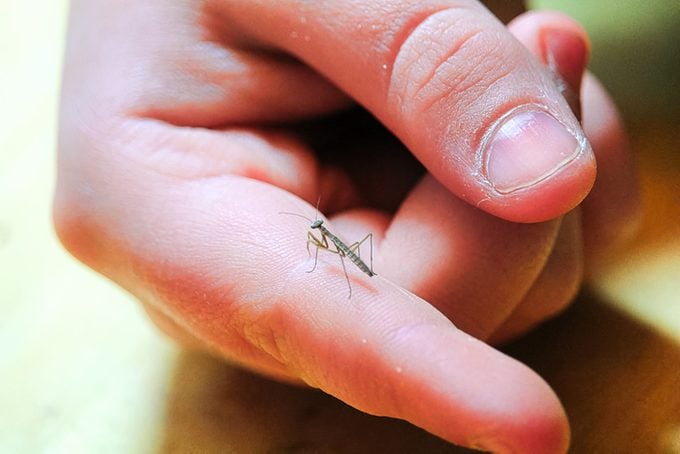
The life cycle takes about a year. Females reach full size by mid- to late summer, when they are ready to mate. The males, which are a lot smaller, proceed with caution, because cannibalism isn’t unknown in mantid species.
Discover 8 bugs you should never kill in your garden.
Praying Mantis Eggs and Babies
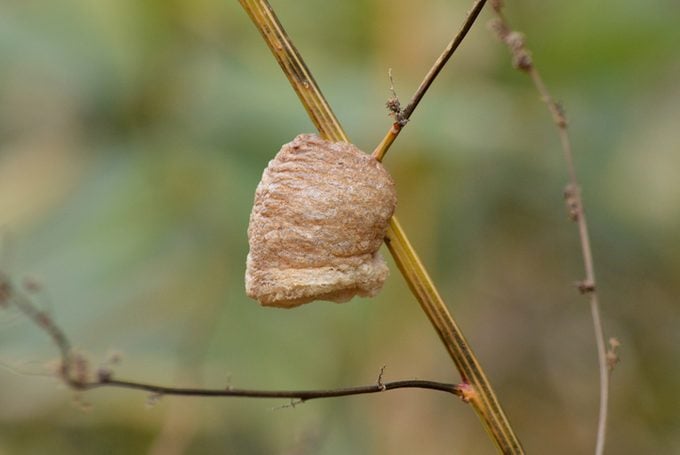
Afterward, the female lays a cluster of eggs on a plant stem and encases them in foam that dries into a protective case. The eggs overwinter and develop. Then, come springtime, they hatch into miniature replicas of the adults. These baby praying mantis are ready to devour any garden pests that come their way.
Plant a caterpillar cafe in your butterfly garden.
How to Attract a Praying Mantis
No matter where you live, the best way to persuade mantids to settle in your garden or landscape is simply to fill your space with a wide range of plants. Native plants work best because they more readily attract tasty insects. Avoid insecticides, too.
Chinese Mantids
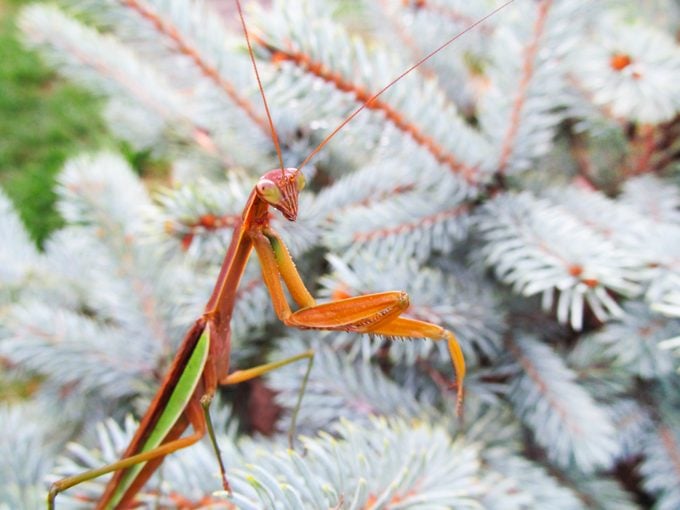
Although most mantids are welcome backyard guests, one species in particular overstays its welcome: Chinese mantids. They’re eye-catching, but these invasive insects are replacing native species such as the Carolina mantid. The situation is not complete gloom and doom, though. Like all mantids, this species eats pesky garden bugs, too.
Ladybug vs Asian beetle: What’s the difference?
Praying Mantis Control
Kenn and Kimberly say, “If your garden seems overrun with mantises, you can pick some off by hand (wear gloves) and remove them. In late fall, look for the distinctive mantis egg cases on your plants and destroy those to reduce the next year’s population.”
Next, check out the ultimate guide to growing milkweed plants for monarchs.

